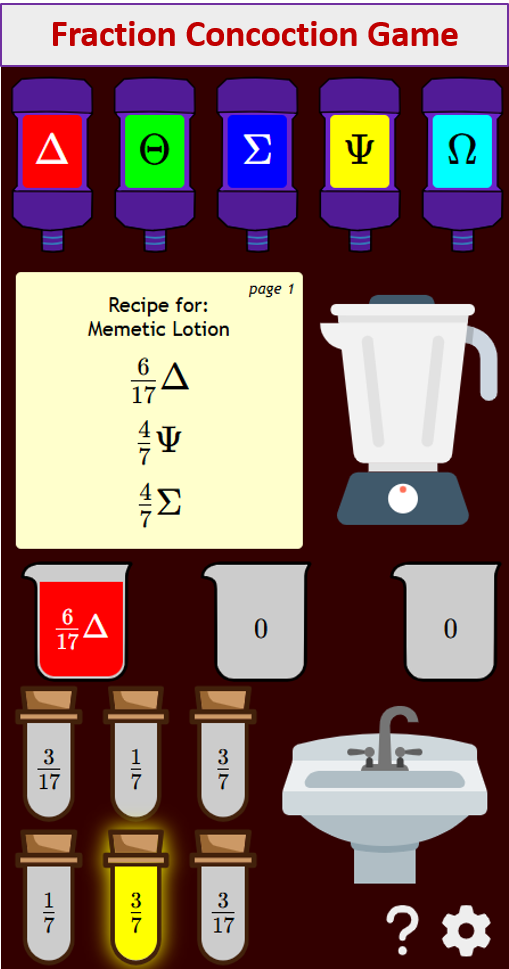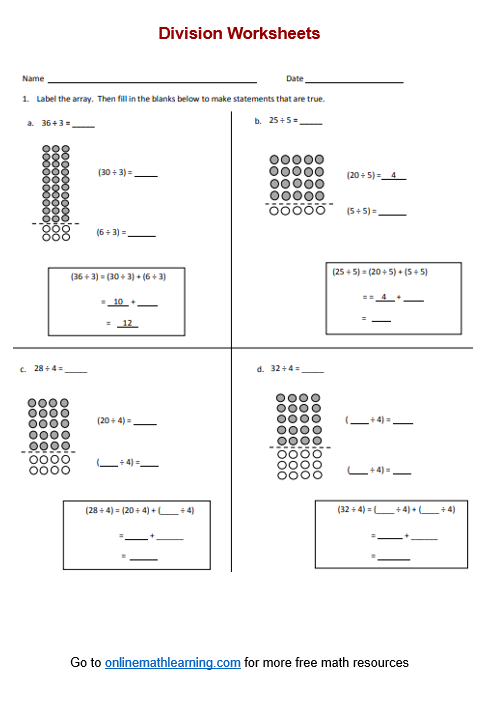Divide Using Distributive Property Worksheets
Related Pages
Math Worksheets
Lessons for Third Grade
Free Printable Worksheets
Printable Division Worksheets for 3rd Grade:
Division & Equal Groups
Fact Family Triangle (multiplication, division)
Division using Multiplication Facts (2 to 10)
Division using Distributive Property
Divide Using Distributive Property Worksheets
Printable worksheets to help students learn how to use the distributive property to perform division.
Break apart and distribute as a strategy for division.
The distributive property states that multiplying a number by a sum is the same as multiplying the number by each addend in the sum and then adding the products.
Mathematically, it’s expressed as: a × (b + c) = a × b + a × c
While the distributive property is primarily for multiplication, it can be indirectly used to divide numbers more easily. The idea is to break down a larger dividend (the number being divided) into smaller, more manageable parts that are easier to divide by the divisor.
Steps for Division Using Distributive Property:
- If possible, express the dividend as a sum of two or more numbers that are easier to divide by the divisor.
- Divide each of the smaller numbers (addends) that you created in step 1 by the divisor separately.
- Add the results of the individual divisions from step 2 to find the final quotient of the original division problem.
Example:
Divide 69 ÷ 3 using the distributive property.
Break down 69: 69 = 60 + 9
Divide each part: 60 ÷ 3 = 20 and 9 ÷ 3 = 3
Add the quotients: 20 + 3 = 23
Therefore, 69 ÷ 3 = 23.
Benefits of this approach:
- It can help you perform simple divisions mentally without writing out the entire division process.
- It allows you to handle division problems with larger dividends more easily.
- It reinforces the relationship between multiplication and division, strengthening your understanding of both operations.
Remember: The distributive property is primarily a multiplication concept, so this approach is a strategy for making division easier, not a strict rule of division itself. However, it can be a helpful tool for solving division problems more efficiently.
Have a look at this video if you need to learn how to divide using the distributive property.
Click on the following worksheet to get a printable pdf document.
Scroll down the page for more Divide Using Distributive Property Worksheets.
More Divide Using Distributive Property Worksheets
Printable
(Answers on the second page)
Divide Using Distributive Property Worksheet #1
Divide Using Distributive Property Worksheet #2
Divide Using Distributive Property Worksheet #3
Divide Using Distributive Property Worksheet #4
Related Worksheets
Divide using the Distributive Property
Try out our new and fun Fraction Concoction Game.
Add and subtract fractions to make exciting fraction concoctions following a recipe. There are four levels of difficulty: Easy, medium, hard and insane. Practice the basics of fraction addition and subtraction or challenge yourself with the insane level.

We welcome your feedback, comments and questions about this site or page. Please submit your feedback or enquiries via our Feedback page.
